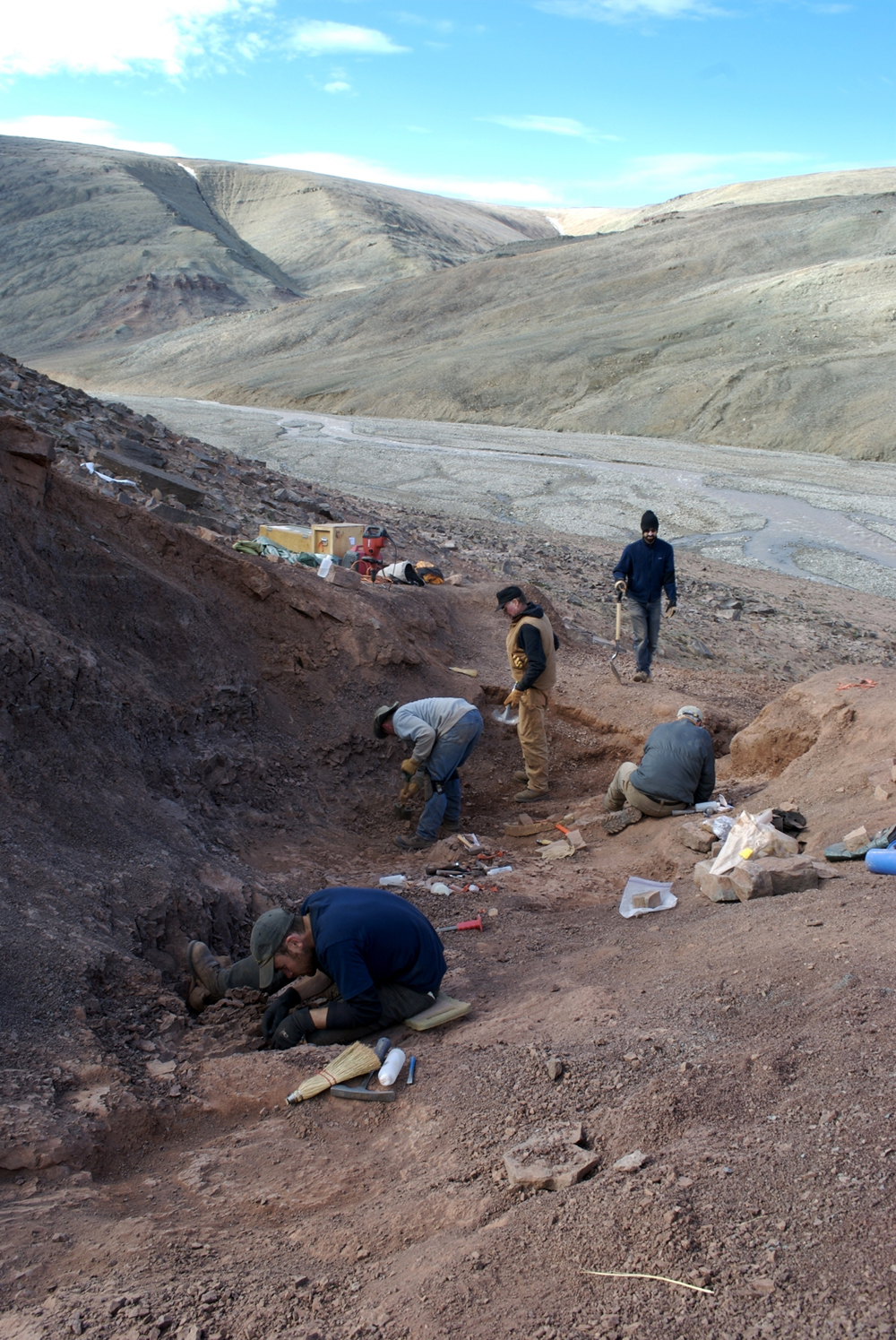How to Pack for an Arctic Summer Expedition

For a team of paleontologists, this summer's destination isn’t a tropical island or a theme park, but a barren part of the Canadian Arctic accessible only by helicopter. So, what do you pack when planning to spend about three weeks in the wilderness hunting fossils, in a place so remote that transportation can cost $2,000 per hour?
Supplies recently shipped up to an Arctic research base include (but are not limited to): 4 lbs (1.8 kilograms) of coffee and two coffeemakers; 8 lbs (3.6 kg) of hard cheese; five bottles of hot sauce; plenty of candy, dried fruit, nuts and nutrition bars; bags of dry ingredients for chili, pasta and other dinners; dishwashing equipment; a new tent to replace one ripped up by a windstorm; and 37 rolls of toilet paper.
These supplies are meant for the team of four researchers, plus a film crew of four accompanying them for half the expedition on Ellesmere Island.
Then there are the paleontological supplies, which include an electric jackhammer, five bottles of paleobond adhesive used for gluing fossils and a plastic cast of one of the prehistoric creatures, known as Tiktaalik roseae, whose fossils they are seeking. (The film crew requested the latter.) [Gallery of Fantastic Fossils]
Come prepared
After seven previous expeditions to the High Arctic Islands, the team has packing down to a science, said Ted Daeschler, one of the paleontologists and an associate curator at the Academy of Natural Sciences of Drexel University.
"We are really good at it now," Daeschler said of packing. "As remote and difficult a place as it is, I’ve got no worries — aside from polar bears — whether we have the right stuff or not."
Sign up for the Live Science daily newsletter now
Get the world’s most fascinating discoveries delivered straight to your inbox.
Because of the polar bears, some team members must carry loaded shotguns. "Geeks with guns" are his wife's biggest fear, Daeschler told LiveScience's OurAmazingPlanet.
The shotguns and ammunition are among the supplies that remain at the research base at Resolute Bay. Other items, including those listed above, are shipped from the United States by air cargo. The team assembles at Resolute Bay, then, if all goes well, they take a small airplane, then a helicopter to their first field site.
Paleontological paradise
The landscape of Ellesmere Island is dominated by rock, ice and water, along with some tundra and mud, Daeschlersaid. While not ideal for human survival, the landscape is great for paleontology.
"It is a very geologically exposed place. That is great for what we do, (since) we need to see rock," he said.
Daeschler and his colleagues, including Neil Shubin from the University of Chicago, are interested in rocks laid down about 370 million to 390 million years ago during the Devonian Period. The researchers are looking for fossils of fish whose fins had begun transitioning to limbs that would allow later descendents to emerge onto land. The first limbs appear to be adaptations for pushing around shallow aquatic habitats, Daeschler said.
"We are finding some very unique fossils that are helping us to understand that transition," he said.
The most prominent of these is the Tiktaalik roseae, a 375-million-year-old fossil fish. Dubbed a "fishapod," it represents an intermediate step between fish and land animals.
On the frontier
Prior to Daeschler and Shubin's first expedition to the area in 1999, the only time fossils were collected from these Devonian rocks was a century earlier, when a Norwegian expedition picked up some while exploring. But no focused paleontological research had taken place here until these modern expeditions began.
"You think, 'Oh it’s a small world, it's all been done,'" Daeschler said. "There definitely are frontiers that still need exploration."
On this expedition, Daeschler, Shubin and two other researchers, Josh Miller of the University of Cincinnati and Marcus Davis from Georgia's Kennesaw State University, are returning to the site where the first Tiktaalik fossils were found, accompanied by a British documentary crew. The researchers then plan to travel alone to a second, new site to see what they might find.
Follow OurAmazingPlanet @OAPlanet, Facebook and Google+. Original article at LiveScience's OurAmazingPlanet .










